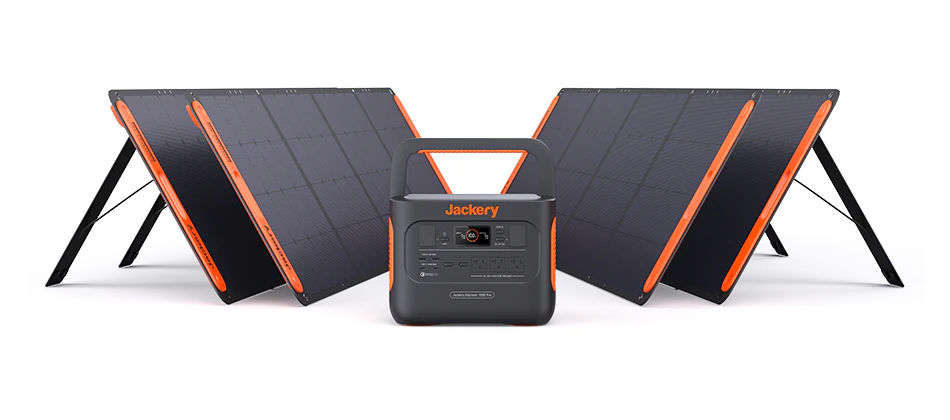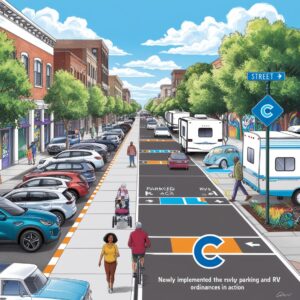
Where Should You Go RV Camping?
If you make a purchase using the links in this article, we may make a commission. And, as an Amazon Associate, I earn from qualifying purchases. See the full disclosure here.
Where Should You Go RV Camping?
Our friend who operates an RV store told us that the most common question new RV owners ask is, “Now that we have it, where can we move it?” The answer varies by state, but the essentials remain the same. Consider what your perfect campsite should have. Do you prefer developed campgrounds, or are you a nature lover who wants to get as far away from society as possible? Knowing the options for RV camping can make finding the right spot much easier.
Campgrounds: Public and Private
Finding private RV parks and campgrounds is straightforward with the right tools. Campground directories are the most convenient way to locate RV camping spots while on the road. Organized by map and municipality, these guides include reviews, prices, directions, and more. Private RV parks and campgrounds differ in their facilities, but most offer power, water, and a dump station.
Public campgrounds provide a wider selection of prepared camping spaces, from full-hookup RV sites to rustic spots with no facilities. Learning about public lands and the camping options available will help you find the best campsites quickly.
Camping Areas Open to the Public
Here’s a list of public land managers offering camping possibilities. Each state has different rules, so knowing who to contact for official information is helpful. For a comprehensive state-by-state guide to RV camping, check out www.rv-camping.org. You’ll find camping information, suggestions, ideas, and more.
- · National Parks – Our nation’s gems. Almost all national parks have developed campgrounds. These parks are located in the USA’s most scenic and historic places. More National Parks…
- · State Parks – Every state has a park system that includes designated camping locations. Facilities range from full RV hookup campsites to dispersed remote camping areas.
- · USDA Forest Service – Forests offer developed and dispersed camping (camping outside a developed campground) for RV campers. You can camp just about anywhere it doesn’t say “No Camping”. More National Forest…
- · BLM (Bureau of Land Management) – This government agency is responsible for millions of acres of public lands throughout the western USA. Primitive campgrounds are the norm for the developed campgrounds, and designated LTVA (Long Term Visitor Area) camping areas in Arizona and California offer extended stays that entice thousands of snowbirds every year. More BLM…
- · USACE (US Army Corps of Engineers – also known as COE) – Water projects are located throughout the USA, and many offer camping and other recreation opportunities.
- · FWS (US Fish & Wildlife Service) – Many national wildlife refuges offer camping suitable for RVers. But Rules are different from refuge to refuge, so be sure to check carefully. The FWS website can be found here.
Hidden Gems
But wait, there are more options. Many small towns have city parks, fairgrounds, or lakes where you can camp. Consider staying at a state wildlife management area, especially in the off-season when you can find some of the nicest spots. Camping is often permitted on state properties with or without a permit. County parks, community parks, state forests, and state recreation sites are all available!
Finding Public Camping Areas
The best resource for discovering both public and private campgrounds is www.rv-camping.org. Thousands of hours have gone into compiling official camping information for every state. If you want to search on your own, here are a few tips:
- Internet – Public land administrators maintain fairly updated websites. Some sites can be tricky to navigate, but persistence pays off.
- Maps – We prefer the Benchmark Road & Recreation Atlas for the western U.S., but DeLorme maps are also excellent.
- Travel Guides – These can be found in libraries, bookstores, and online. State travel and tourism offices often provide free guides.
- State Information Centers (SICs) – These aren’t always helpful but do have some camping information.
RV Camping Principles
Many people visit public areas to camp and enjoy the outdoors. Remember, no one is cleaning up after us or our pets. If we don’t take care of our public lands, we risk losing access to them. Learn about leave-no-trace camping principles: respect the rights of others and always leave your campsite in better condition than you found it.
How to Find Free Camping Spots
Hey fellow adventurers, it’s Bob and Cyndi from RPlaceTravels, here to share our secrets on finding those elusive free camping spots for your RV. Imagine waking up to a stunning sunrise over a pristine lake, with no one else in sight, and the best part? It didn’t cost you a dime. Let’s dive into our tips for uncovering the best free camping spots.
1. National Forests and Grasslands
One of our favorite go-to spots for free camping is national forests and grasslands. These vast areas often allow dispersed camping, meaning you can set up camp pretty much anywhere that isn’t explicitly marked as no camping. Just remember, the rules can vary by location, so check with the local ranger station.
2. Bureau of Land Management (BLM) Lands
If you’re exploring the western U.S., BLM lands are your ticket to free camping. These public lands offer plenty of space for RVers, often with stunning scenery. Look for areas outside of developed campgrounds, but be prepared for more primitive conditions.
3. Walmart and Other Retailers
For a quick overnight stop, many Walmarts, Cracker Barrels, and other retailers allow RVers to park overnight for free. It’s not the most scenic option, but it’s convenient when you’re just passing through. Always check with the store manager first and follow any posted rules.
4. Rest Areas and Truck Stops
Rest areas and truck stops can be a lifesaver when you need a place to sleep on a long drive. While some states prohibit overnight parking, many do allow it. Just be courteous to truckers and other travelers sharing the space.
5. Online Resources and Apps
Technology can be your best friend when searching for free camping spots. Websites like freecampsites.net and apps like Campendium and iOverlander provide user-generated information on free camping locations. Reviews and tips from fellow RVers can guide you to the best spots.
6. Public Lands and Wildlife Management Areas
Don’t overlook state wildlife management areas, county parks, and other public lands. These spots often have fewer visitors and can offer fantastic camping experiences, especially during the off-season.
7. Boondocking Basics
Boondocking, or dry camping without hookups, is the key to enjoying free camping spots. Make sure your RV is equipped for self-sufficiency with enough water, propane, and battery power. Solar panels can be a great investment for extended stays off the grid.
8. Respect the Land
When you find that perfect free camping spot, remember to respect the land. Pack out all your trash, minimize your impact, and follow local regulations. By being good stewards, we help ensure these spots remain available for everyone to enjoy.
Finding free camping spots can feel like a treasure hunt, but with these tips, you’ll be well on your way to discovering amazing places without breaking the bank. So pack up your RV, hit the road, and let’s find those hidden gems together!
Happy camping, Bob and Cyndi

